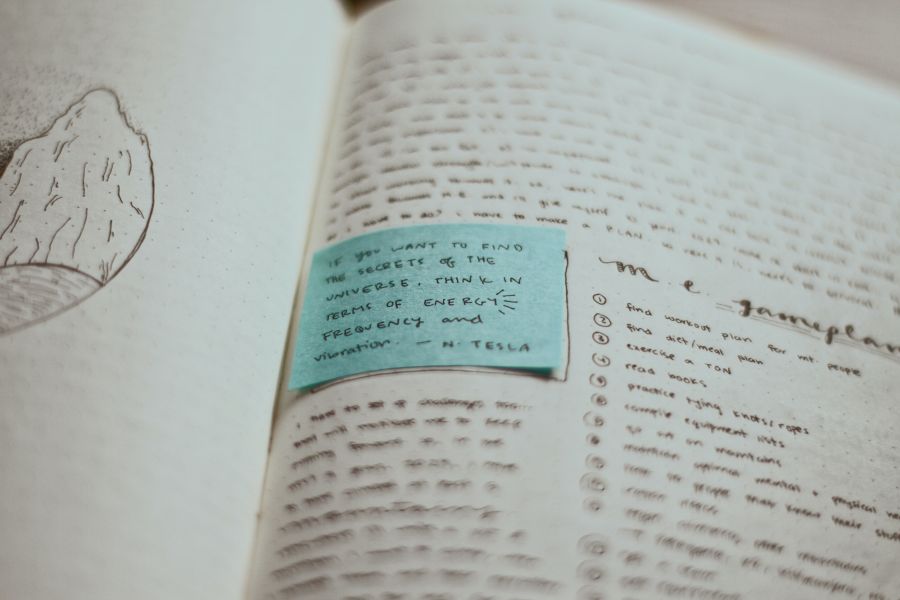The first pavilion samsung with the moon - the brilliant ancient shu civilization
Audience friends:
Hello, welcome to sanxingdui visit!
Sanxingdui to about 5000 ~ 5000 years ago, with a total area of 12 square kilometers, is found in sichuan area is the most widely, the longest duration, the ancient city with the most abundant cultural connotation, ancient ruins of the ancient shu culture, sanxingdui commentaries. The discovery of sanxingdui ruins, which pushed the source of ancient shu history from the spring and autumn period and the warring states period to about 2000 years; It has proved eloquently that the origin of Chinese civilization is multiplex.
The sanxingdui site covers a total area of 12 square kilometers, and its central area is an old city surrounded by three walls of east, west and south, the duck river to the north and nearly four square kilometers of urban area. The city, which was so large 3,000 years ago, is rare in the whole country, and is believed to have been the capital of the ancient shu state. The narrow sanxingdui refers to sites within the three loess heap, north of it and its crescent is a crescent moon, through the ancient Ma Mu henan north, "samsung," hence the name, and in the long ago become a famous cultural landscape. Yan in the spring of 1929, local farmers (yan1) as near the garden digging a ditch when accidentally discovered more than 400 of the country with rich ancient shu jade stone, has drawn great attention of the Chinese and foreign archaeologists. Since the 1930s, several generations of archeological people have been here to find out. From July to September 1986, two large commercial dynasties were excavated, and thousands of exquisite relics were born, and sanxingdui was famous.
The first unit is in the southwest -- the history of ancient shu in 2000
The ancient legend records that the ancestors of shu people were from the yellow emperor, the state of shu, the state of shu. The first generation of shu wang is called silkworm bush, his greatest achievement is to teach the people to plant mulberry silkworm; The second generation of shu wang's name is bai irrigation. There are few details about him, and he only knows that "bai irrigation" is a waterfowl. The third generation of shu wang is the fish teal. The "teal" is an osprey, and the sanxingdui has found a large number of birds, with the most images of the osprey, which is generally believed to be the most closely related to the sanxingdui. The fourth generation of shu wang called du yu, du yu is the cuckoo. Legend "leisure farming", he loved, but weak governance shudu floods, and from the liberal's in its region, due to control the floods,, loved by the people become the fifth generation of shu wang replaced the cuckoo. It is estimated that from the early period of the shang dynasty to the middle of the spring and autumn period from the early part of the shang dynasty to the middle of the spring and autumn period, the enlightenment was from the middle of the spring and autumn to the middle of the spring and autumn period.
In the north of han river basin, east to jingjiang reach area, southwest of dadu river, jinsha river and north area in guizhou, there are many sites and relics of the shu culture, the distribution of the most densely populated region is the chengdu plain. Sanxingdui site is located in the center of the cultural circle of shu, which was the center of the ancient shu culture three or four thousand years ago.
The sanxingdui culture lasted more than 2,000 years from 5,000 to 2,800 years ago. From the archaeological stratigraphy and typology, sanxingdui culture is divided into four periods.
The primary culture of sanxingdui is about 5,000 ~ 4000 years ago. This period pottery with wide along the flat machine, mainly used in hole ring foot, production methods are hand-made, the means of production is given priority to with stone axes, froe, chisel, small shape, at the same time in the jade, jade kei (gu and), yuhuan and other small etiquette supplies.
Many architectural remains have been found in the ruins. The buildings are mostly dry columns. The advantages are that the materials are easy to be used, and that they are well protected against wind and moisture. The housing area is generally two or thirty square meters, the largest one is about 200 square meters, it is estimated that it is a public property.
In 1997, 29 rectangular mud pits were found in the village of rensheng outside the western wall of sanxingdui, where jade ware, stone tools, pottery and ivory were unearthed. Among them, the jade of cone shape, style, and jiangsu and zhejiang area neolithic tombs of liangzhu culture jade unearthed in conical device, illustrates the chengdu plain and the middle and lower reaches of the Yangtze river region have long cultural ties.
Sichuan neolithic cultural sites distribution is very wide, especially in the chengdu plain found many ancient city sites, among them with dujiangyan xinjian township treasure at the pier, the dragon mountain city ruins, salween yufu city sites, double river state, purple bamboo village ruins of ancient city ruins of ancient city, PI county, found that for the bulk. The discovery of these ancient cities shows that in the late neolithic period chengdu plain had already had the small city organization, only sanxingdui stood out as the center of the ancient shu state.
Archaeology in the sense of sanxingdui culture in two to three phases of sanxingdui culture as the representative, about 4000 years ago to 3200, equivalent to the central plains xia shang, this is the most prosperous period of sanxingdui culture, is believed to belong to the history of the ancient shu of the legendary king of yufu era. In this stage, the local specialty of high - stalk beans, small flat cans, bird heads (ba4) spoon and other earthenware appeared, and formed the basic combination of shu earthenware.
From the second phase, sanxingdui entered the age of civilization. People built walls, east, west and south. Nearly 4 square kilometers of the central city has been completed, the city layout is reasonable, the structure is rigorous. According to different functions, it needs to be divided into the workshop area of the residents' living area, the sacrificial area, the burial area, the palace district, etc., and the guide word "sanxingdui guide".
It is generally believed that the establishment of the city, the setting of the sacrificial site, the production of bronzes and the appearance of words are the symbols of the ancient civilization and the country. Sanxingdui has not general settlements and villages, but in early in the southwestern city, country, especially in combination with the unearthed cultural relics sites, the ancient shu kingdom has made remarkable achievements in various fields.
Sanxingdui ancient shu kingdom was not because "intones difficult" and not on contacts with other regions, in the ruins unearthed YuGe, jade Zhang (useful ā ng), ceramic He (he), bronze, copper statue, etc and jiangsu, henan, anhui and other places are very similar unearthed artifacts, Peng county in sichuan bamboo tile found at the street belongs to the central plains of bronze vessels (zhi) and copper statue, is probably the shu army joined Zhou Wang reward out of struggle to shu wang booty; There are also some records of "zheng shu", "shu", "shu 300", etc. All the signs show us that the ancient shu nation was full of open spirit.
The fourth period culture of sanxingdui ruins is an early shu culture period, which is roughly the same as the late zhou dynasty, about 3,200 ~ 2800 years ago.
The fourth period of pottery is dominated by small canisters and sharp depots. In this period, a certain factor made the grand sanxingdui ancient city suddenly abandoned, and sanxingdui civilization interrupted the local development process. In early 2001, with the discovery of jinsha site in chengdu, the traces of the ancient shu state became clear. The era of jinsha ruins was in the late shang dynasty and early western zhou dynasty, late at sanxingdui site, and there was a close internal connection between the two. Scholars believe that after the sanxingdui, the political and cultural center of ancient shu moved south to chengdu, and the ancient shu culture moved to a new stage of development.
The second unit is the tianfu - sanxingdui agriculture and commerce
At present within the site unearthed a large number of form large pot, ceramic cylinder, POTS, etc., it is possible that containers of food, their shape, large size, more reflect the diversity of crop production. Livestock, is one of the scale of agriculture to flourish, the unearthed sanxingdui domesticated animal bones and animals such as pigs, sheep, horse, chicken modelling is more, can want to see the poultry industry has a certain scale, agricultural and sideline products is also very rich.
Relics unearthed in a lot of wine, the food in addition to meet the daily life, there has been a rest used for wine, in these wine, pottery He and bottle shape cup's most distinctive.
Tao He (he) - generally think it is a warm wine, mostly three 40 cm. Tao He lower three hollow pouch can increase tao He capacity, and can make a fire heating, the design is very reasonable. In the ruins of a soil pit, had found a tao He with more than 20 pieces of bottle shape cups placed one place, and the wine is used.
Bell mouth, the bottle shape cup - is made of fine bottleneck, round flat, some neck and ornamentation, looks simple and beautiful, because of the shape bottleneck is small, some scholars speculate that wine should be at that time may be to "wine chamber (z ǐ)" sake.
More than 80 ivory tusks were unearthed at sanxingdui site, which were identified as the incisors of Asian elephants. Scholars consider them to be symbols of the wealth of the ruling class. As for the source of ivory, it is possible that local elephants might have been the result of trade deals with neighbouring countries or even further afield.
The ancient shu is located inland, in sanxingdui memorial pit, but unearthed nearly 5, 000 seashells. According to the general explanation, haibei was the primitive currency of Commodity Exchange in the early years of civil society, and the trade and commerce between the ancient shu countries and the surrounding areas were frequent. 2 sacrificial pit have been unearthed at 4 pieces of imitation in seashells of copper, the copper shell are rarely seen across the country, whether it is the one of the first metal currency, it remains to be further research.
A great deal of archaeological data has shown that cultural exchanges and economic exchanges have been found in the area of shu and its surrounding areas even further back in the three or four thousand years ago. According to the research, in the pre-qin period, the chengdu plain was opened to connect ancient China with South Asia, central Asia, west Asia and southeast Asia. Although we cannot know how long the ancient shu people have walked on the rugged mountain road, what we can see is the perseverance and perseverance of the ancient shu people. It was this spirit and persistence that created the glorious civilization of ancient shu and opened the window of China to the world.
The third unitary soil - sanxingdui pottery
It is easy to draw, easy to make, not permeable, and can withstand high temperature barbecue, thus becoming the life supplies of various agricultural peoples. The pottery industry of sanxingdui ancient shu reached a high level.
The sanxingdui unearthed a large number of small flat and pointed POTS, bowls, cups, cups, etc. They were typical objects of the pottery of shu. The bottom is small to a conical shape, which is not stable at all. A similar object was found in the site, which is estimated to be used with the sharp end.
High a bean is above the disc body, is mainly used for sheng (cheng2) put the food, the lower is the horn ring foot, connection of the tubular beans (ba4), some bean residue was more than 70 cm long, this is the ancient people sit on the floor for the convenience of life designed a very ingenious and practical life appliance. There is also an eye on the pedestal of this high-handle bean, and the eye pattern appears more in the sanxingdui artefacts, which must have a profound meaning.
Three feet for cooking could be instruments of ancient people cooking food, a trend of tripartite confrontation with three legs, the first step to light the fire heating, three-legged are hollow, and mouth are interlinked, water capacity is very big, wide area (cheng2) water can be used to hold or to place food, its huge body and distinctive modelling is very rare.
Unearthed sanxingdui doi new realistic modelling, lively and lovely, tell from the shape, with lotus, cockscomb, some still like the roof of the mosque, as part of wheel cover, new plastic part then knead by hand, fully shows the sanxingdui anonymous craftsmen rich imagination and skills.
Hundreds of "ba4 spoons" were unearthed at the site, and most of the dipper parts were damaged, leaving only the bird's head shape "ba4". The beak of a bird is very similar to a fish hawk. The academic community thinks that the ancient shu kingdom of sanxingdui may have a close connection with the legendary third-generation shu wang, which is one of the important bases.
The pottery of sanxingdui is an unpretentious and unpretentious one, which recreates the vivid picture of the daily life of the ancient shu people, and plays a huge role in the determination of the sanxingdui site and the stage of the sanxingdui culture.
The fourth unit is jade stone, a jade stone
Jade stone has a unique position in the history of the Chinese nation. Since the late neolithic age, our country's jade industry has been developed, which was represented by the liangzhu culture jade stone
第一展馆 三星伴月——灿烂的古蜀文明
观众朋友:
您好,欢迎您到三星堆参观游览!
三星堆遗址距今约5000年~2800年,总面积12平方公里,是目前四川境内发现面积最广,延续时间最长,文化内涵最为丰富的古城、古国、古蜀文化遗址,三星堆导游词。三星堆遗址的发现,将古蜀历史的渊源从春秋战国时期向前推进了约2000年;雄辩地证明了中华文明的起源是多元一体的。
三星堆遗址总面积为12平方公里,其中心区域是一座由东、西、南三面城墙包围着的古城,北面是鸭子河,城区面积近4平方公里。3000多年前如此宏大规模的城市,在全国范围内都很少见,据考证这里曾经是古蜀国的国都所在地。狭义的三星堆特指遗址内的三个黄土堆,它与北面犹如一弯新月的月亮湾,隔着古老的马牧河南北相望,“三星伴月”由此得名,并在很早以前就成为一处著名的人文景观。1929年的春天,当地农民燕(yan1)道成在自家院子附近挖水沟时偶然发现了400余件具有浓郁古蜀地方特色的玉石器,引起了中外考古学家的高度重视。从30年代开始,几古学人便在此发幽探微。1986年7月至9月,两个大型商代祭祀坑的相继发掘,上千件精美文物横空出世,广汉三星堆从此名扬天下。
第一单元 雄踞西南—古蜀2000年沧桑史
古史传说记载,蜀人的远祖出自黄帝,古蜀国有五代蜀王。第一代蜀王叫蚕丛,他最大的功绩是教民种桑养蚕;第二代蜀王名叫柏灌,关于他的具体记载几乎没有,只知道“柏灌”是一种水鸟;第三代蜀王叫鱼凫。“凫”就是鱼鹰,三星堆发现了大量鸟的造型,其中鱼鹰的形象最多,一般认为,与三星堆关系最为密切的便是鱼凫王。第四代蜀王叫杜宇,杜宇就是杜鹃鸟。相传他“教民务农”,倍受爱戴,但却无力治理蜀地的水患,而来自川东荆楚地区的开明氏,由于治理了水患,受到人民的拥戴,取代了杜宇而成为第五代蜀王。推测蚕丛、柏灌、鱼凫三代是从夏朝至商末周初,杜宇估计是从商末周初至春秋中叶,开明氏则是从春秋中叶至公元前316年秦灭巴蜀。
在北达汉水流域,东至荆江地区,西南迄大渡河,金沙江及今贵州北部一带,分布着许多蜀文化的遗址和遗迹,分布最密集的地区是成都平原。三星堆遗址位于蜀文化圈的中心区域,是三四千年前是古蜀文化的中心。
三星堆文化从距今5000年到2800年,延续了2000多年。从考古地层学和类型学上看,三星堆文化分为四期。
三星堆一期文化距今约5000~4000年。这个时期的陶器以宽沿平底器、镂孔圈足器等为主,制作方法多为手制,生产工具以石制的斧、锛、凿为主,器型小,同时出现了玉璧、玉圭(guī)、玉环等小型礼仪用品。
遗址内发现了许多建筑遗迹,这些建筑多为干栏式建筑,其优点是材料易得,而且防风防潮性能良好。房屋面积一般为二、三十平方米,最大的一处建筑面积达200平方米左右,估计是公共性质的建筑。
1997年,在三星堆西城墙外的仁胜村发现了29座长方形土坑,坑中出土有玉器、石器、陶器、象牙等。其中,玉锥形器的形制、风格和江浙一带新石器时代良渚文化墓葬中所出土的玉锥形器极为相似,说明了成都平原和长江中下游地区很早就有了文化联系。
四川新石器时代文化遗址分布非常广阔,特别是在成都平原发现了很多古城遗址,其中以新津龙马乡宝墩古城遗址、都江堰芒城遗址、温江鱼凫城遗址、崇州双河、紫竹村古城遗址、郫县古城遗址等的发现为大宗。这些古城的发现,说明在早在新石器时代晚期成都平原已经有了大小城邦组织,其中只有三星堆脱颖而出,成为古蜀国的中心都邑。
考古学意义上的三星堆文化是以三星堆遗址二至三期文化为代表,大约距今4000年至3200年,相当于中原地区的夏商时代,这是三星堆文化最繁荣的时期,一般认为属于古蜀史传说中的鱼凫王时期。在这个阶段极具地方特色的高柄豆、小平底罐、鸟头把(ba4)勺等陶器大量出现,并形成了蜀地陶器的基本组合。
从二期开始,三星堆进入了文明时代。人们修建了城墙,东、西、南三面城墙。面积近4 平方公里的中心城市也已建成,城内布局合理、结构严谨。按不同的功能、需要分为居民生活区作坊区、祭祀区、墓葬区、宫殿区等,导游词《三星堆导游词》。
一般认为,城市的建立、祭祀场所的`设置、青铜器的产生、文字的出现等是古代文明和国家产生的标志。三星堆已经不是一般的聚落、村寨,而是雄踞在西南的早期城市、国家,特别是结合遗址中的出土文物来看,古蜀国在各个领域都取得了卓越的成就。
三星堆古蜀国并没有因为“蜀道难”而与其他地区不相往来,遗址中出土的玉戈、玉璋(zhāng)、陶盉(hé)、铜牌饰、铜尊等与江苏、河南、安徽等地出土的器物极为相似;在四川彭县竹瓦街发现了商末周初属于中原的铜觯(zhì)和铜尊,很可能是蜀国的军队参加了灭商的斗争周王赏赐给蜀王的战利品;中原甲骨文中也不乏有“征蜀”、“伐蜀”、“蜀射三百”等记载……种种迹象都向我们说明了古代蜀国是充满开放精神的。
三星堆遗址四期文化是早蜀文化由盛转衰时期,大致相当于商末周初,距今3200~2800年左右。
四期的陶器以小平底罐和尖底器为主。在这个时期,某种因素使宏大的三星堆古城被突然废弃,三星堆文明中断了在本地的发展进程。2001年初,随着成都金沙遗址的发现,古蜀国的踪迹才显清晰。金沙遗址的时代约在商代晚期至西周早期,晚于三星堆遗址,两者之间有着密切的内在联系。学者们认为,自广汉三星堆之后,古蜀国的政治、文化中心向南迁移到了成都,古蜀文化至此转入一个新的发展阶段。
第二单元 物华天府—三星堆的农业与商贸
目前在遗址内出土了大量形体硕大的陶盆、陶缸、陶罐等,有可能是装粮食的容器,它们器型多、体量大,反映了当时农作物生产的多样性。家畜饲养,是农业兴旺发达的标尺之一,三星堆遗址出土的家养动物遗骨及猪、羊、马、鸡等动物造型较多,可以想见当时家禽饲养业具有一定的规模,农副产品也很丰富。
遗址中出土了大量的酒器,说明粮食除了满足日常生活外,已经有了剩余部分用于酿酒,在这些酒器中,以陶盉和瓶形杯最具特色。
陶盉(hé)——一般认为它是温酒器,大多高三四十厘米。陶盉下部的三只中空袋状足既可以加大陶盉容量,又可生火加温,设计极为合理。在遗址的一个土坑中,曾发现一件陶盉与20多件瓶形杯放置一处,可见这些酒器是配套使用的。
瓶形杯——被做成喇叭口、细瓶颈、圆平底,有的颈部还有纹饰,看起来质朴美观,由于这种器型瓶颈较小,有学者推测当时的酒应可能是去了“酒滓(zǐ)”的清酒。
三星堆遗址祭祀坑共出土80多枚象牙,经鉴定为亚洲象的门齿。学者们认为它们是统治阶级财富的象征。至于象牙的来源,有可能当时本地出产大象也有可能是蜀地与周邻国家甚至更远地区商贸交易的结果。
古蜀地处内陆,在三星堆祭祀坑中却出土了近5000枚海贝。按一般的解释,海贝是文明社会初期从事商品交换的原始货币,可见古蜀国与周边地区商贸往来的频繁。二号祭祀坑中还出土了4枚仿海贝而成的铜贝,这种铜贝在全国范围内都很少见到,它是否是我国最早的一种金属货币呢,还有待进一步研究。
大量的考古资料证明早在三、四千年前蜀地与周边地区甚至更远的地方就有了文化交流和经济往来。据考证,先秦时期就已经开通了以成都平原为起点,连接古代中国与南亚、中亚、西亚以及东南亚的 “南方丝绸之路”。虽然我们无法知道古代蜀人在崎岖的山道上究竟走了多久,但是我们能体会到的是古蜀人坚忍不拔的精神与毅力。正是这种精神与毅力创造了辉煌灿烂的古蜀文明,也打开了中国通往世界的窗口。
第三单元 化土成器—三星堆陶器
陶器取材容易,制作简便,具有不透水,而且可以经受高温烧烤,因此成为各个农业民族的生活用品。三星堆古蜀国的制陶业达到了一个相当高的境界。
三星堆出土了数量巨大的小平底和尖底的罐、钵、杯、盏等,它们是蜀地陶器的典型器物。这种尖底器,底部小到呈圆锥状,根本放不稳,遗址中出土了一种类似器座的器物,估计是和尖底器搭配使用的。
高柄豆上面是盘状体,主要用于盛(cheng2)放食物,下部是喇叭形圈足,连接二者的是管状的豆把(ba4),有的豆把残长竟达70多厘米,这是席地而坐的古人们为方便生活而设计的一种很巧妙实用的生活用具。这件高柄豆的器座上还刻有一只眼睛,眼睛图形在三星堆文物上出现较多,必定有深刻的寓意。
三足炊器可能是古人蒸煮食物的器具,三足呈鼎立之势,足下可以生火加温,三足均为中空,与口部相通,容水量很大,宽大的盘面可以用于盛(cheng2)水或放置食物,其硕大的形体及独特的造型非常罕见。
三星堆出土的陶盖纽造型惟妙惟肖、生动可爱,从造型上讲,有莲蓬状的,鸡冠花状的,有的还像清真寺的屋顶,盖的部分是轮制而成的,纽的部分则用手工捏塑,充分显示了三星堆无名工匠们丰富的想象力和高超的技艺。
遗址中出土了数以百计的“鸟头把(ba4)勺”,勺体部分大多损坏,只剩下有鸟头造型的“勺把(ba4)”。鸟弯弯的勾喙与鱼鹰极为相似。学术界认为三星堆古蜀国可能与传说中第三代蜀王鱼凫有着密切的联系,这一大批鸟头勺把就是非常重要的依据之一。
三星堆的陶器以朴实无华的特质,再现了古蜀人日常生活的生动画卷,并对三星堆遗址年代的测定及三星堆文化的分期起到了巨大作用。
第四单元 以玉通神—三星堆玉石器
玉石器在中华民族的历史上有着独特的地位。自新石器时代晚期以来,我国的制玉业就很发达,这一时期以良渚文化玉石器为代表
相关文章
清明上河园的导游词2023-06-16 23:08:54
景德镇景区导游词范文2023-06-02 12:27:50
湖北神农架香溪源景区导游词2023-06-09 21:38:59
河北邯郸旅游的导游词2023-06-19 02:14:36
西安城墙导游词范文2023-06-02 03:19:45
云冈石窟英文导游词2023-06-08 11:45:44
上海对外经贸大学和北京交通大学(威海校区)对比哪个好(排名分数线区2024-03-31 16:25:18
河北高考排名237950名物理能上什么大学(能报哪些学校)2024-03-31 16:19:23
山东城市建设职业学院在山东招生人数和招生计划 多少人2024-03-31 16:15:16
上海农林职业技术学院在湖南招生人数和招生计划 多少人2024-03-31 16:12:52
吉林农业科技学院在湖南招生人数和招生计划 多少人2024-03-31 16:09:19
安徽高考多少分可以上云南经贸外事职业学院 招生人数和最低分2024-03-31 16:04:52
景点导游词(十五篇)2023-06-11 20:10:27
四川九寨沟导游词(精选十五篇)2023-06-03 11:44:39
湖北省有名景点导游词2023-06-18 14:24:56





